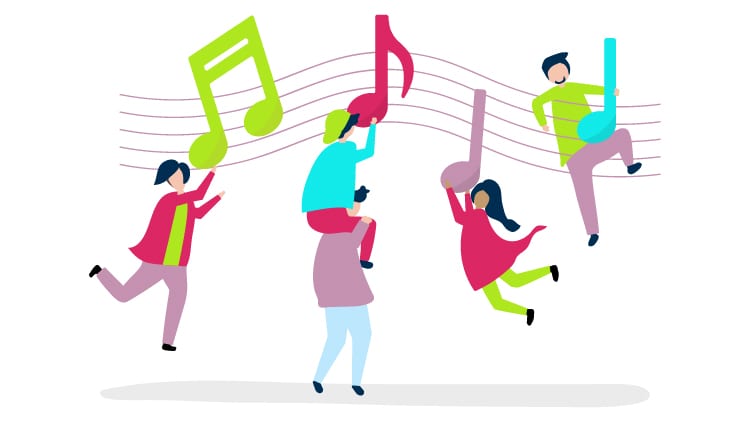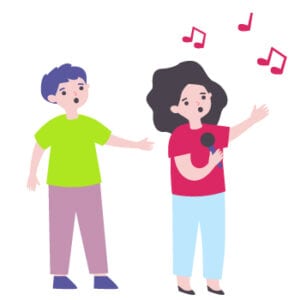
Do’s and Don’ts When Translating Songs
Music and Translation
There are a few things that cannot be stopped by man-made borders. But even if two people can communicate with each other through the internet despite the physical distance between them, they will have to do something about the linguistic barrier. However, there are some things that can affect everyone despite the linguistic barrier, and music is the best example of this. Over the years, many musicians have inspired foreigners. It is not only the music itself that helps singers connect with their audience but also their voice and the passion with which they sing. But this doesn’t mean that songs cannot or should not be translated. Many songs ended up becoming more iconic after they were translated and sung by foreign singers.
Translation services are important for all of us in different ways. Some of us need it for individual conversations, while others turn to it to get help with immigration. No one can deny the importance of translation and the role it plays in our lives. From business and healthcare to legal and education, it is important for every industry, and it brings positive changes in our lives every day. It has also made it possible for people to enjoy foreign movies and TV shows. But not everything can come with subtitles. And when it comes to songs, people want to be able to enjoy the melody and lyrics and not have to read the translation on the screen at all times. Fortunately for us, there is a solution, and that is the translation of songs.

Translating Songs: Precision & Essence
In the realm of song translation, the target language serves as the canvas upon which the original lyrics are carefully transposed. It’s a delicate dance between linguistic accuracy and preserving the essence of the original song.
Professional translators embark on this journey armed with a deep understanding of both the source and target languages. They meticulously dissect the nuances of the original lyrics, unraveling the threads that weave together melody and meaning.
With each translation, the aim is to seamlessly transport the soul of the song into the target language, ensuring that its emotive power resonates with native speakers.
Song Translation: Unity Across Cultures
Navigating the intricacies of song translation requires more than mere linguistic proficiency; it demands a keen ear for rhythm and rhyme. Every word must harmonize with the melody, preserving the singability of the song in its new linguistic form.
Language barriers dissolve as songs transcend borders, bridging the gap between disparate cultures and native languages. Through the alchemy of translation, favorite songs become accessible to audiences worldwide, fostering a sense of unity through music.
Translating a Spanish song into English, for instance, entails more than a direct translation of the lyrics. It requires a deep dive into cultural context, ensuring that the essence of the original song is faithfully preserved while resonating with the target audience.
Analyzing Lyrics: Cultural Adaptation
The previous step in the translation process involves a thorough analysis of the original song’s lyrics, identifying cultural references and idiomatic expressions that may pose challenges in the target language.
English lyrics may undergo a metamorphosis when translated into Spanish, as professional translators strive to capture the essence of the original song while adapting it to resonate with a new audience.
Each translation of a song belongs to a relevant category, whether it be pop, rock, or ballad, requiring translators to tailor their approach to suit the genre and tone of the original song.
Translating for Performance: Nuanced Adaptation
As native speakers of the target language, translators wield their linguistic prowess to craft translations that capture the essence of the original song while seamlessly integrating into the cultural fabric of the target audience.
A direct translation of song lyrics may suffice in some cases, particularly when the goal is to provide a literal interpretation for foreign language learners. However, for songs intended for performance, a more nuanced approach is necessary to ensure that the translated lyrics maintain the rhythm and flow of the original composition.
The universal language of music transcends borders, making it a powerful medium for cultural exchange. Through translations of songs, artists and listeners alike embark on a journey of discovery, exploring new musical landscapes and forging connections across linguistic divides.
Whether it’s a heartfelt ballad or an upbeat anthem, the art of song translation allows audiences to experience the magic of music in their native language, breaking down barriers and fostering a sense of unity in an increasingly interconnected world.

Do’s and Don’ts When Translating Songs
Translation is a complicated process in itself, but it becomes even more difficult when it has to deal with poetry and lyrics. There are some things about poetry that cannot be translated as it is. They also have a rhythm that might get lost in translation. A lot of things need to be considered when getting the translation of a song. Linguistic experts need to understand which practices they should follow and which ones they should avoid completely.
Things to Do
Here’s what you should do when translating songs:
- Keep the Singability:
The one aspect of a song that it should never lose is its singability. It is the aspect of the song that makes it easier for an artist to sing it. It is the phonetic suitability of the resulting text. If the lyrics lose this feature, then the result will be prose and not the kind of poetry that can be sung. The linguistic expert must keep the melody in mind and make sure the text matches it.
- Rhyme:
Another important feature of lyrics is rhyming. If the lyrics aren’t rhyming, then they will just be sentences. No artist will be able to sing lyrics if they don’t rhyme. Although not all the lyrics rhyme, some of them do. A qualified linguistic expert will be able to figure out which rhymes to keep and which to lose.
- Naturalness:
One thing that can get lost in translation is the naturalness of a song. If the linguistic expert decides to do a literal translation, then the result will not be a natural flow of sentences. The singer will have trouble using the lyrics in a song. And even if a song is created, the listeners will not be able to enjoy it.
- Keep the Meaning of the Original Text:
It is important to keep the meaning of the original text. A linguistic expert might get carried away while writing the lyrics. Although they don’t have to translate the text word to word, they must keep its meaning; otherwise, it will become a new song.
Things to Avoid
In their attempt to be accurate, linguistic experts can make a lot of mistakes. They need to understand that entertainment content is different from official documents. This is what they should avoid while translating songs:
- Literal Translation:
Avoid translating the text literary at all costs. It is better to keep in mind that the text you have can be sung. The resulting text should also have this feature. But if you go for literal meaning, you won’t be able to achieve the desired results.
- Ignoring the Melody:
There are situations when the translation is needed only as a subtitle because people are familiar with the melody. In such situations, ignoring the melody is okay. But when the resulting text has to be sung by an artist, then you cannot ignore its melody. You must make sure that the words you have written sync with the melody that was composed by the original artist.
- Keeping Idioms and Cultural References:
Your job is pretty much explaining the lyrics to the target audience in their language without losing the rhymes and the rhythm. But you can’t do that if you keep the cultural references of the original text. You must replace them with culturally appropriate references. Idioms should also be changed according to the target audience’s needs.
Translating something as complex as songs can be very difficult, but those who have been handling such tasks for years know just how to do it properly. They understand the problems and can come up with the right solutions. These are the people who make it possible for others to enjoy entertainment content, regardless of its original language. They assist us in getting over the linguistic barrier and enjoy songs created by our favorite artists.
FREQUENTLY ASKED QUESTIONS
Why is song translation more complex than other types of translation?
Song translation is more complex because it not only requires linguistic accuracy but also the preservation of rhythm, rhyme, and melody. Translators must ensure that the translated lyrics maintain the original song’s essence and are singable in the target language.
What challenges do translators face when translating song lyrics?
Translators face several challenges, including maintaining the original song’s meaning, adapting cultural references and idiomatic expressions, ensuring the lyrics fit the melody, and preserving the natural flow and rhyme of the lyrics.
How do professional translators handle cultural references in song lyrics?
Professional translators adapt cultural references to make them relevant and understandable to the target audience. They replace idioms and cultural nuances from the original lyrics with equivalent expressions in the target language to ensure the song resonates with the new audience.
Can song lyrics be translated literally?
While literal translation might be useful for educational purposes, it is generally unsuitable for songs intended for performance. Literal translations often lose the melody, rhythm, and emotional impact of the original song, making it necessary for translators to take a more nuanced approach.
How does song translation contribute to cultural exchange?
Song translation breaks down language barriers, allowing people from different cultures to enjoy and understand music from around the world. It fosters a sense of unity and cultural exchange, enabling audiences to experience the magic of music in their native language.

